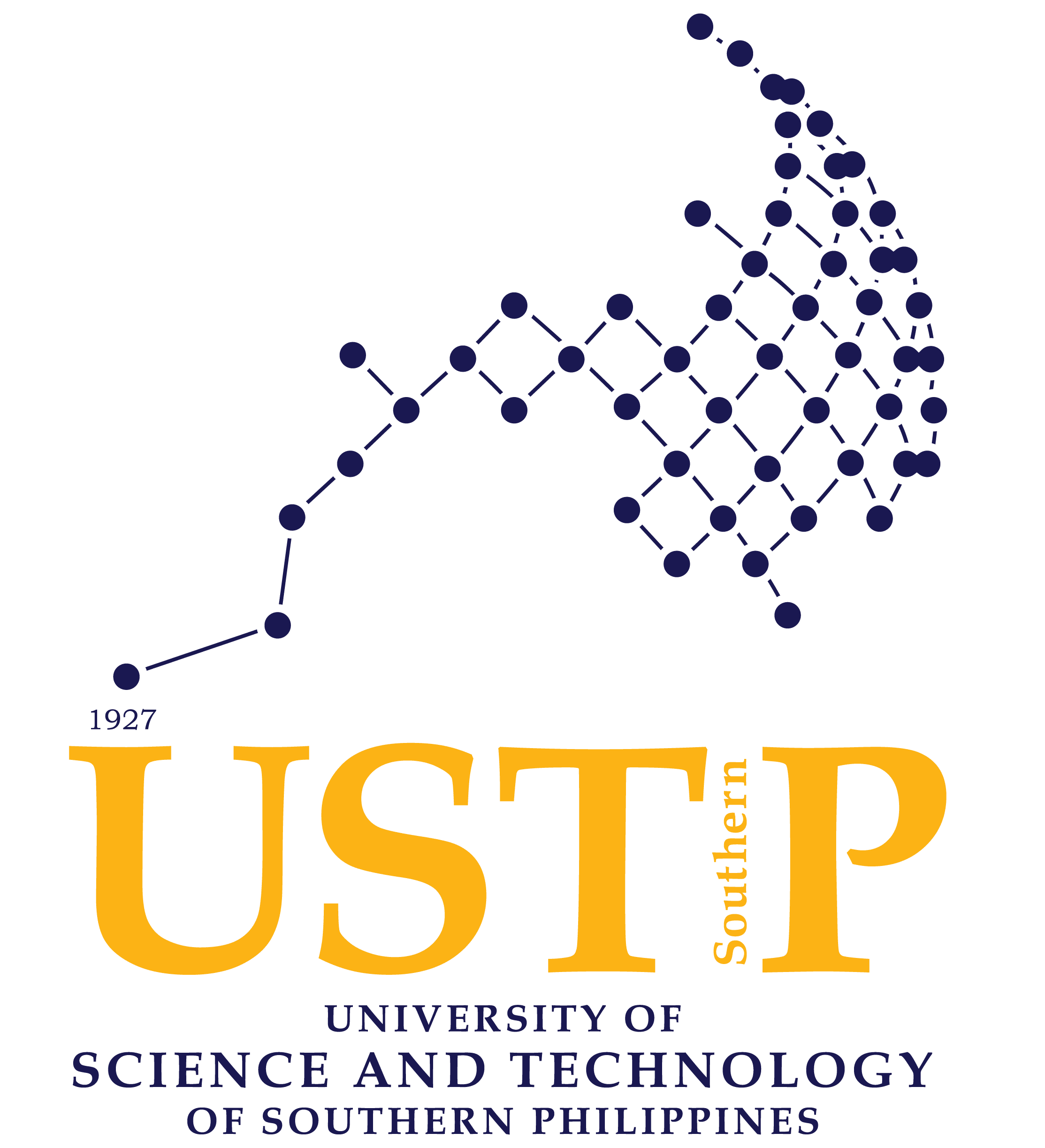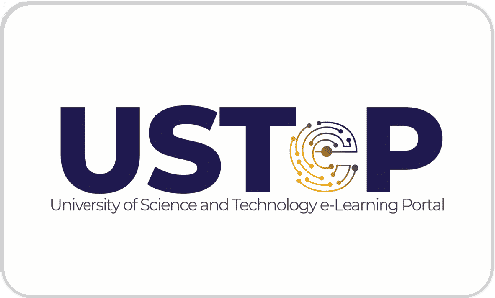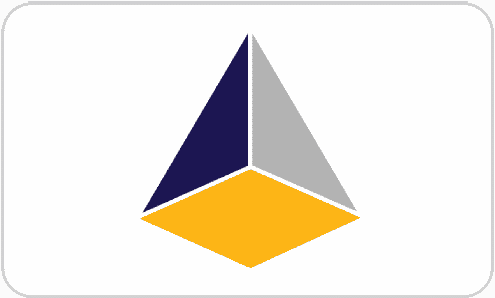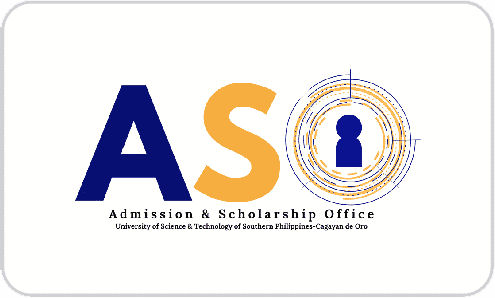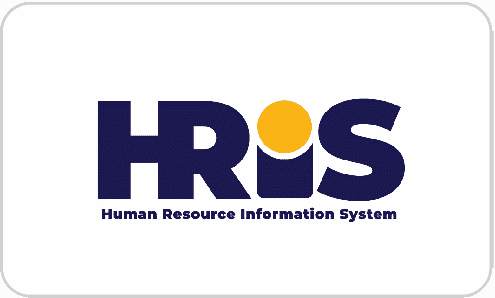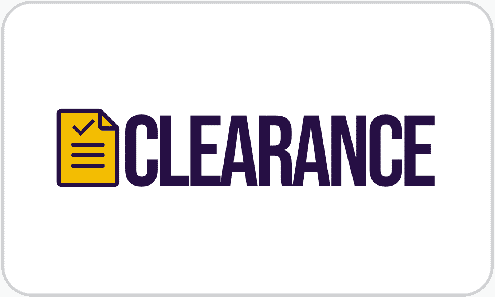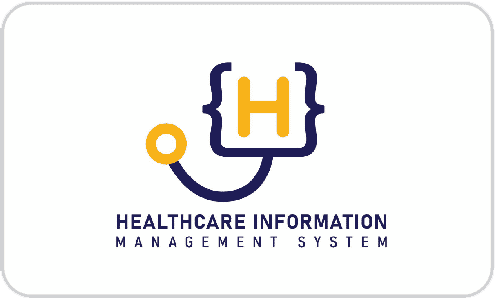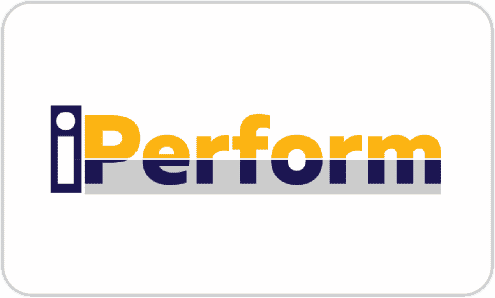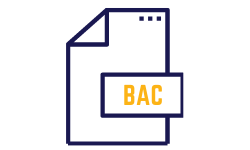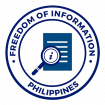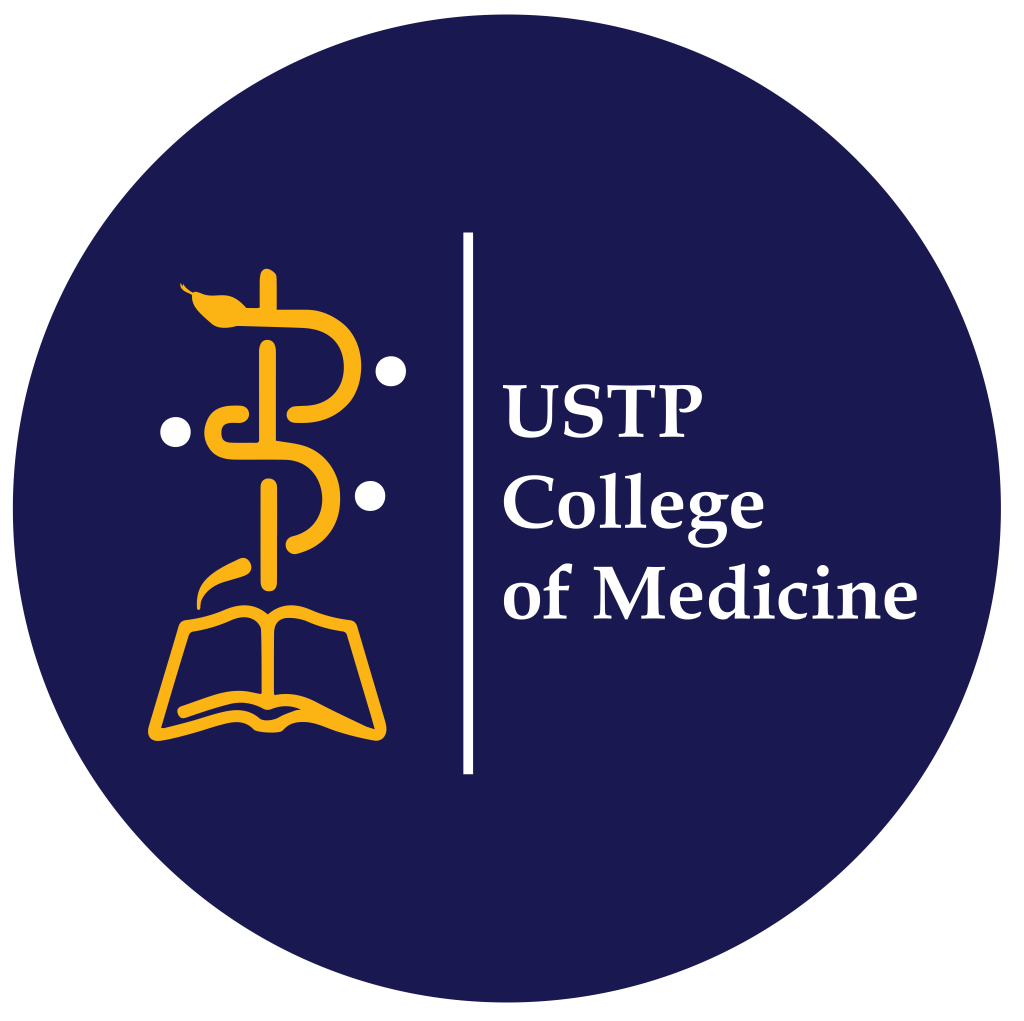
College of Medicine
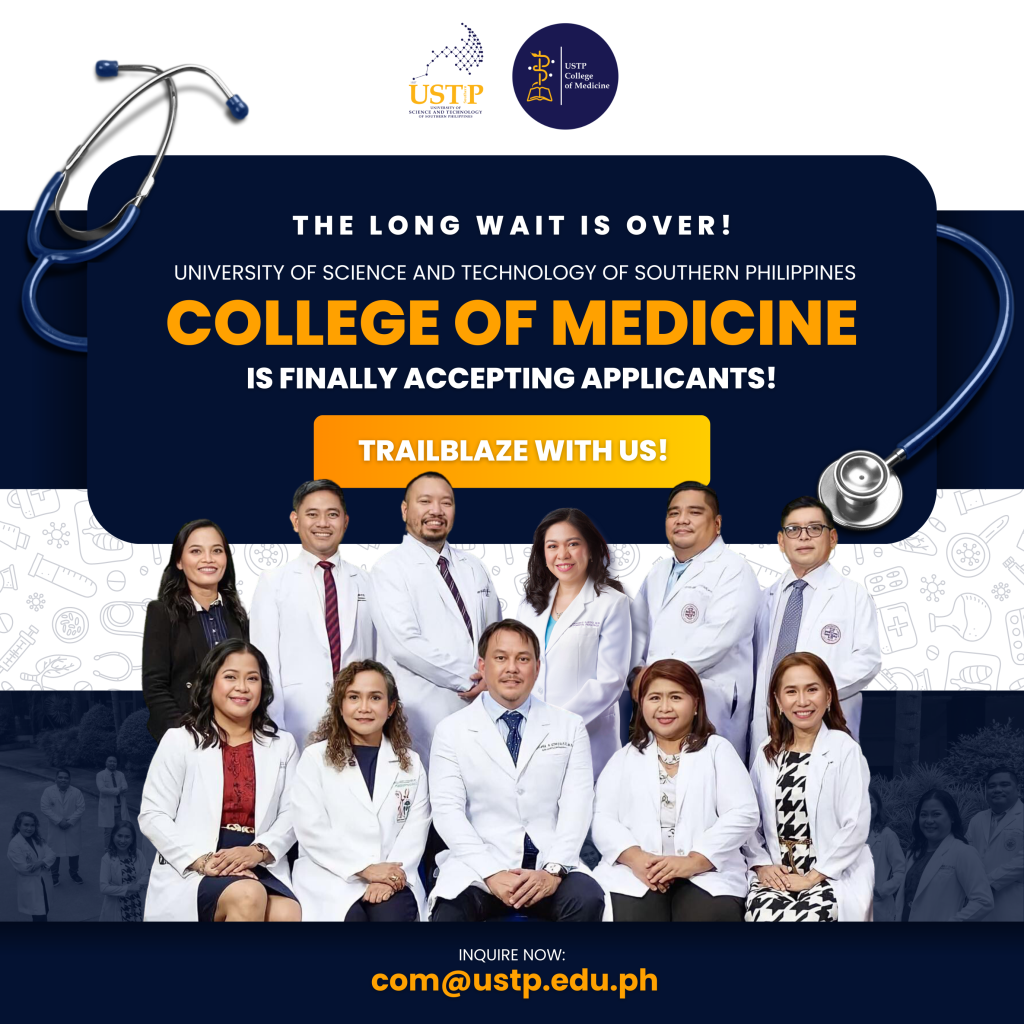
ABOUT US
History
The establishment of the College of Medicine at the USTP Cagayan de Oro was conceived as a response to the COVID-19 pandemic. This highlighted the need for long-term solutions to ensure the sustainability of countermeasures involving public health, especially in terms of the sufficiency of the nation’s healthcare professionals.
Locating the proposed College of Medicine at the USTP CDO is strategic since CDO is one of the nation’s progressive cities, ranking as the fifth most competitive city in the Philippines. The City of Cagayan de Oro is located at the gateway of the Northern Mindanao Region, geographically nestled between the coastline of Macajalar Bay and the land masses of Bukidnon and Lanao del Norte. It is a densely populated city in need of a sufficient quantity of competent healthcare professionals. Of the fourteen (14) Higher Education Institutions (HEI) in Cagayan de Oro City, only two privately owned HEIs offer the Doctor of Medicine (M.D.) Program and other curricular programs related to the study of healthcare. CDO is home to six (6) other state universities and colleges, but there is no state-owned academic institution in the city that has an established college of medicine.
The USTP CDO adheres to the provisions stipulated in Republic Act No. 10931, otherwise known as the “Universal Access to Quality Tertiary Education Act”. As an academic institution, the USTP has maintained excellence in the delivery of instruction pertaining to the fields of science, technology, and engineering over several years. This makes the university capable of accommodating the establishment of the College of Medicine. At present, the university is identified as a Center of Excellence in Information Technology by the Commission on Higher Education (CHED), the only one in Northern Mindanao with such recognition. It is also recognized as a Center of Development in Mathematics, Electrical Engineering, and Agriculture. Further, the university has sent faculty scholars abroad, currently specializing in Pharmacy and Biomedical Science and Biomedical Engineering as part of its continual faculty development program.
The USTP College of Medicine in Cagayan de Oro City, by virtue of House Bill (HB) No. 8123 as introduced by Cagayan de Oro Second District Representative Honorable Rufus B. Rodriguez, was approved by the USTP Board of Regents through Board Resolution No. 141, s. 2021. Furthermore, the USTP CDO is also set to establish a University Health Center following the approval of appropriated funds under the General Appropriations Act of 2021. Upon the enactment of HB No. 8123, the USTP College of Medicine would be an exemplary complement to the University Health Center, as students under the proposed college would be equipped with the appropriate and necessary training to be competent in the aforementioned field.
The university believes that it is imperative for a nation to have a productive workforce as it fuels its progressive socio-economic development. As demonstrated during the implementation of different levels of community quarantine in the nation, it is essential to sustain the labor force of the country. In the establishment of a state-run College of Medicine at the USTP CDO through the enactment of HB No. 8123, the State and the University exhibited their continued support for the fulfillment of state policies that concern public health.
An established College of Medicine at the USTP CDO would provide excellent medical education and training to additional health professionals in the region, considering its dense population. Moreover, these competent health professionals that the university would be producing would benefit the State by keeping healthy and productive citizens that would contribute to the socio-economic development of the region and the country in general.
In sum, the USTP System firmly supports the endorsement of House Bill No. 8123 and sees it as a privilege for the university, as it would be another milestone in the fulfillment of its mandate and its contribution to the existing policies of the State with regard to public healthcare. With its current stature and the subsequent developments in infrastructure and faculty resources, the USTP CDO recognizes its capacity to accommodate the establishment of the USTP College of Medicine. As a State University in one of the most progressive cities in the nation and pursuant to the provisions of RA 10919, it is only fitting for the USTP to have an institution that would further strengthen the execution of its mandate, provide quality tertiary education to its stakeholders, and directly impact the community, especially in the sufficiency of human resources in the public health sector.
Vision
A science, technology, and research-driven learning institution nurturing medical scholars to link healthcare with the community.
Mission
We commit to offer innovative, evidence-based, and community-oriented medical education for deserving scholars who will provide quality healthcare to underserved populations.
Goals
1
Foster in the students the requisite knowledge, skills, and values to ensure the competent practice of medicine subscribing to professional, legal, and ethical standards.
2
Equip students to critically evaluate existing technology and information through the conduct of research for the advancement of medicine.
3
Network with partner institutions to provide learning environments that link academic knowledge to clinical experience.
4
Identify and adopt communities, in collaboration with USTP colleges and stakeholders, to develop culturally-sensitive programs that focus on the primary healthcare needs of communities.
5
Produce lifelong learners updated on the advances in medicine to ensure quality healthcare and patient safety.
Graduate Attributes
Clinician
A physician equipped with advanced knowledge in science and technology, possessing efficient communication, management, and critical thinking skills needed to abide by the professional, legal, and ethical standards for the practice of medicine.
Researcher
A physician equipped to critically evaluate existing technology and information and to conduct ethical research for the advancement of medicine.
Community Leader
A physician who can work harmoniously with individuals and organizations that address health needs of communities, in the development of health programs that empower individuals and groups to enhance and maintain their health.
Lifelong Learner
A physician immersed in continuous personal and professional development in order to broaden his/her perspective on the healthcare system as well as advances in medicine that will ensure quality healthcare delivery and patient safety.
Academician
A physician who recognizes his/her role in the formation of learners and who commits to the set of values that underlie the practice of medicine.
ADMISSION
Admission Requirements
No student shall be discriminated against and denied admission to the University by reason of sex, nationality, religion, political affiliation, or physical disability (RA 10919, Section 47). Following the selective admission policy of the university, students must satisfy all the requirements as indicated below:
1. Must be a Filipino citizen living in the Philippines (with PSA-authenticated Birth Certificate). Age of 20-35 years old at the time of application.
2. Must be a holder of a bachelor’s degree in any field of interest granted by a college or university recognized by the Commission on Higher Education (CHED), provided that such degree was taken within a five-year period prior to the filing of the application.
3. Must have an NMAT score equivalent to the 80th percentile or higher taken not more than 2 years from the time of application.
4. Must have a General Weighted Average (GWA) of 85% or better based on the weighted average of the following subjects: English, Mathematics, Chemistry, Zoology and Social Science.
5. Must have passed the panel interview conducted by the Admissions Committee.
The applicant will be evaluated based on the following:
NMAT 40%
GWA 40%
Interview 20%
6. The applicants will then be ranked and selected by the Admissions Committee for recommendation to the Dean of Medicine.
7. Deserving students as defined in the “Doktor Para sa Bayan Act” will be given priority.
Application Process
1. Accomplish online form and upload initial documents: https://forms.gle/uHjyKQJQA2eGtCix6
Initial documents:
Transcript of Records
National Medical Admission Test Results
Latest Curriculum Vitae
2. Evaluation of initial documents
3. In-person interview with Admissions Committee
4. Submission of documentary requirements
Required documents:
Certified True Copy of Transcript of Records
Certificate of General Weighted Average
Certified True Copy of National Medical Admission Test Result
Certificate of Good Moral Character from last school attended
2×2 ID photo with white background
PSA Birth Certificate
5. Final evaluation of documents
6. Approval of recommended applicants by the College Dean
7. Approval of recommended applicants by the Chancellor
8. Enrollment of accepted applicants
ACADEMICS
Faculty
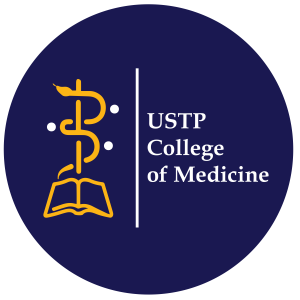
Curriculum
The USTP medical curriculum is integrated, involving horizontal integration in the first-year level (basic sciences with clinical applications) and vertical integration in the second- and third-year levels (clinical sciences with basic sciences review, clinical communication skills, ethical concepts, professionalism, and social and population health). The fourth year is devoted to clinical clerkship, where students apply their gained knowledge, skills, and attitudes as they interact with members of the health care team and patients during their rotation in the different medical specialties in the base and affiliate hospitals.
The curriculum is based on the SPIRAL Model, where topics are revisited throughout the course at different levels of complexity, from Level 1 to Level 4.
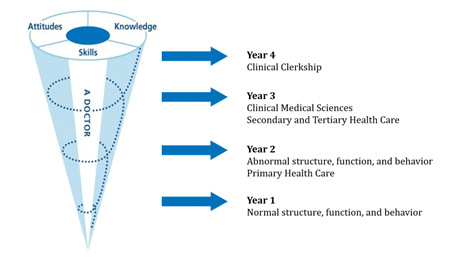
The educational strategies follow the SPICES Model as follows:
S – Student centered
P – Problem based / case based
I – Integrated / Interprofessional
C – Community oriented
E – Elective driven
S – Systematic
A student-centered approach has been adopted in order to give the student more responsibility for his own learning. A problem-based learning approach.
The design of instruction considers alignment between the VMG of the medical school and that of the university, the program outcomes, the teaching-learning activities, and assessments. Teaching-learning activities involve the following: problem-based learning modules with study guides, online small-group discussions, online classrooms for synthesis of the module, flipped classrooms, virtual or actual laboratory sessions (when necessary), concept mapping, submission of a reflection paper as regards each module, and mentoring.
Type of Assessments
Assessments are both formative and summative and are aligned with the outcome and teaching-learning activity. Formative assessments are in the form of pop quizzes, the results of which are given to the mentors to be used to determine student progress and guide their mentees towards achievement of the outcome and objectives. Summative assessments are in the form of long examinations given at the end of each module, the results of which are used to arrive at a grade.
A test blueprint is provided for every long examination, and test questions generally follow the rules for constructing test items. Rubrics are utilized for essay questions, and skills assessment. Students are required to submit portfolios, which will contain reflections on their progress as regards achievement of the outcomes, together with proofs of such achievement. Portfolios are submitted to mentors every bimonthly and will be used by the mentors to monitor the progress of their mentees and give the necessary advice (formative). The completed portfolio is submitted to the mentor before the final examination and will now be assessed (summatively) using a rubric.
Prospectus
First Year Level | |||||
Course Code | Course Description | Hours | Units | Prerequisite | Co-requisite |
Total | |||||
MED101 | Integrated Basic Sciences | 1,468 | 82 | None | None |
MED102 | Medical Humanities 1 | 108 | 6 | None | None |
MED103 | Research 1 | 108 | 6 | None | None |
MED104 | Electives 1 | 40 | 2 | None | None |
| TOTAL | 1,724 | 96 |
|
|
Second Year Level | |||||
Course Code | Course Description | Hours | Units | Pre-requisite | Co-requisite |
Total | |||||
MED201 | Integrated Clinical Sciences 1 | 1,440 | 80 | Integrated Basic Sciences | None |
MED202 | Medical Humanities 2 | 108 | 6 | Medical Humanities 1 | None |
MED203 | Research 2 | 108 | 6 | Research 1 | None |
MED204 | Electives 2 | 40 | 2 | Electives 1 | None |
TOTAL | 1,696 | 94 | |||
Third Year Level | |||||
Course Code | Course Description | Hours | Units | Prerequisite | Co-requisite |
Total | |||||
MED301 | Integrated Clinical Sciences 2 | 1,440 | 80 | Integrated Clinical Sciences 1 | None |
MED302 | Medical Humanities 3 | 108 | 6 | Medical Humanities 2 | None |
MED303 | Research 3 | 108 | 6 | Research 2 | None |
MED304 | Electives 3 | 40 | 2 | Electives 2 | None |
TOTAL | 1,696 | 94 | |||
Fourth Year Level | |||||
Course Code | Course Description | Months | Units | Prerequisite | Co-requisite |
Total | |||||
MED401 | Medicine, Dermatology | 2 | All 3rd year courses | None | |
MED402 | Surgery, Orthopedics, Neurosurgery, Urology | 2 | All 3rd year courses | None | |
MED403 | Obstetrics and Gynecology | 2 | All 3rd year courses | None | |
MED404 | Pediatrics | 2 | All 3rd year courses | None | |
MED405 | Preventive Community Medicine | 1 | All 3rd year courses | None | |
MED406 | Family Medicine | 1 | All 3rd year courses | None | |
MED407 | Radiology | ½ | All 3rd year courses | None | |
MED408 | Neurology, Psychiatry, Rehabilitation | ½ | All 3rd year courses | None | |
MED409 | Ear, Nose, Throat, Ophthalmology | ½ | All 3rd year courses | None | |
MED410 | Pathology | ½ | All 3rd year courses | None | |
TOTAL | 12 | ||||
Course Descriptions
FIRST YEAR LEVEL
MED 101 – Integrated Basic Sciences
The course integrates Gross and Microscopic Anatomy, Biochemistry, Physiology, and Family and Community Medicine as they focus on the basic principles underlying each discipline and how these principles are integrated to maintain body homeostasis. It focuses on the human life cycle and the effects on growth, development, metabolism and aging on individuals, families, and communities. Strategies involved include problem- based learning, small group discussions, laboratory exercises and independent study. The course lasts for 36 weeks.
MED 102 – Medical Humanities 1
This course deals with the holistic development of the medical students which starts with the introduction of the historical background of the evolution of medicine Given this background, the medical students will understand the cultures and beliefs that influence health and disease. The students will also have an overview of the different models of patient- doctor relationship and with the different attributes of a five- star physician. These will guide them in the process of acquiring new scientific information for enrichment of medical knowledge, thus enhancing the development of their innovative and critical thinking skills.
This course will also provide an avenue for the medical students to develop self-awareness and self-expression, to be resilient when faced with adversity, to collaborate and work with teams through building their oral and written communication skills as well as empathic listening skills which lead them to better understanding of human behavior while working with health systems organizations to provide an efficient and effective management of the health care system in the country.
MED 103 – Research 1
This course introduces the learner to Basic Epidemiology, including its definition, scope and uses, as well as concepts of measuring health and disease. The students will also learn skills for formulating research proposals, including formulating a research question and objectives, conducting a literature review, and choosing the appropriate study design.
MED 104 – Elective 1
First year electives provide the student with opportunities to immerse in the world of work for physicians in various career paths so that they become familiar with the many roles a physician can assume, particularly in public health, community health and basic medical sciences. Options include immersion at the Department of Health, at the Municipal Health Center, Medical Writing, Biomedical Engineering, research centers for Advanced Plant Science and Natural Products Research, among others. The student chooses an elective based on personal interest. Under the guidance of a designated faculty member, the student makes his/her learning objectives for the 2-week elective. At the end of the elective, the faculty member reviews with the student if the learning objectives were met. A reflection paper documents the lessons learned. A certificate of completion of the elective is provided at the end of the 2-week period.
SECOND YEAR LEVEL
MED 201 – Integrated Clinical Sciences 1
This course integrates the paraclinical and clinical sciences (Pathology, Microbiology and Parasitology, Pharmacology and Therapeutics, Internal Medicine, Pediatrics, Surgery, Obstetrics-Gynecology, Ophthalmology, Otorhinolaryngology, Family and Community Medicine, Psychiatry, Medical Jurisprudence, Neurosciences, Dermatology, and Radiology) as they relate to a problem. Students continue learning basic science along with clinical sciences. The course is organized as a series of organ system-based problems presented by a multidisciplinary team of faculty members. In each problem normal structure and function of the system are presented along with the pathology of common diseases that require primary care, and the clinical and pharmacologic approaches to diagnosis and treatment. Each problem presented makes use of a variety of teaching-learning activities that are conducted online or face-to-face. These activities include lectures, small group discussions, laboratory sessions, and independent study using online resources. The small group discussions help develop clinical decision-making skills and address psychosocial, ethical, and legal aspects in the approach to patient care.
MED 202 – Medical Humanities 2
This course deals with the development of the medical students’ ability to work as a team leader in a given community or in a hospital set-up. The students will learn how to take medical and biopsychosocial history. They will also be taught proper bedside manners, as well as how to effectively interact with patients and with people important to patients, as well as to other people working within the health system. They will learn with and from each other to enable effective collaboration and improve health outcomes.
This course will also include professionalism, particularly adherence to ethical practice principles, patient safety, interprofessional education, as well as family counseling. Topics like home care, suffering and hope, death and dying, religion and health are also covered.
MED 203 – Research 2
This course introduces the learner to Basic Biostatistics and Medical Informatics and their application to research studies done in Medicine. The students will also learn skills for data collection, analysis, and presentations.
MED 204 – Elective 2
Second year electives provide the student with opportunities to immerse in the world of work for physicians in various career paths so that they become familiar with the many roles a physician can assume, particularly in non-hospital settings. Options include School or University Clinic, Health Information Technology, Medical Entrepreneurship, Military Medicine, among others. Electives not taken in the first year may still be chosen depending on the student’s interest. Under the guidance of a designated faculty member, the student makes his/her learning objectives for the 2-week elective. At the end of the elective, the faculty member reviews with the student if the learning objectives were met. A reflection paper documents the lessons learned. A certificate of completion of the elective is provided at the end of the 2-week period.
THIRD YEAR LEVEL
MED 301 – Integrated Clinical Sciences 2
Just like in the second year, the courses in the third year are integrated to include the paraclinical and clinical sciences and are organized as a series of organ system-problems presented by a multidisciplinary team of clinical faculty. The problems are approached taking into consideration normal structure and function before going to the pathology of common diseases, and the medical and pharmacological approaches to such diseases that focus on secondary and tertiary care. Teaching-learning activities are varied and may be conducted online or face-to-face. Such activities include lectures (followed by an interactive question and answer session), small group discussions, laboratory sessions, case presentations and independent study (using online resources). These activities help develop critical thinking skills as well as addressing the psychosocial, ethical, and legal approaches to patient care.
MED 302 – Medical Humanities 3 (Bioethics)
The course starts with the importance and goals of bioethics, ethical norms (Christian principles, bioethics principles, and virtues of a health professional). It then focuses on the steps in case analysis and decision-making before moving to actual case studies encountered by health professionals in their respective specialties. Case analysis focuses on the introduction of facts, stakeholders, decision makers, the problem, moral standards, principles, and virtues, ending with recommendations. Teaching-learning activities involve lectures, assigned reading, but focus mainly on small group discussions involving ethical decisions and moral approaches to presented cases. Assessment is mainly in the form of written exams, reflection papers and the group process (using rubrics).
MED 303 – Research 3
This course introduces the learner to public health concepts such as prevention of noncommunicable diseases and surveillance of communicable diseases. Concepts and skills in clinical epidemiology will also be introduced.
MED 304 – Elective 3
Third year electives provide the student with opportunities to immerse in the world of work for physicians in various career paths so that they become familiar with the many roles a physician can assume, in health-related government functions and in other settings. Options include Health Policy Planning and Implementation, PhilHealth, Research Management, among others. Electives not taken in the first and second years may still be chosen based on the student’s interest. Under the guidance of a designated faculty member, the student makes his/her learning objectives for the 2-week elective. At the end of the elective, the faculty member reviews with the student if the learning objectives were met. A reflection paper documents the lessons learned. A certificate of completion of the elective is provided at the end of the 2-week period.
FOURTH YEAR LEVEL
Clinical Clerkship
This course provides the fourth-year medical students for clinical clerkship. The intent of this course is to teach the medical student the fundamentals of clinical examination, evaluation, and care provision, and to enable the medical student to apply theoretical knowledge in clinical practice. The medical students elicit patient histories, complete physical examinations, write progress notes, and assist in surgeries and medical procedures. The medical students are required to rotate in the areas of internal medicine, pediatrics, surgery, obstetrics and gynecology, preventive community medicine, psychiatry, pathology, radiology, ENT, ophthalmology, and orthopedic surgery. They will interact with real patients under the supervision of physicians. The medical students will not only master the knowledge in treating patients, but they are also expected to assume the physician’s role.
